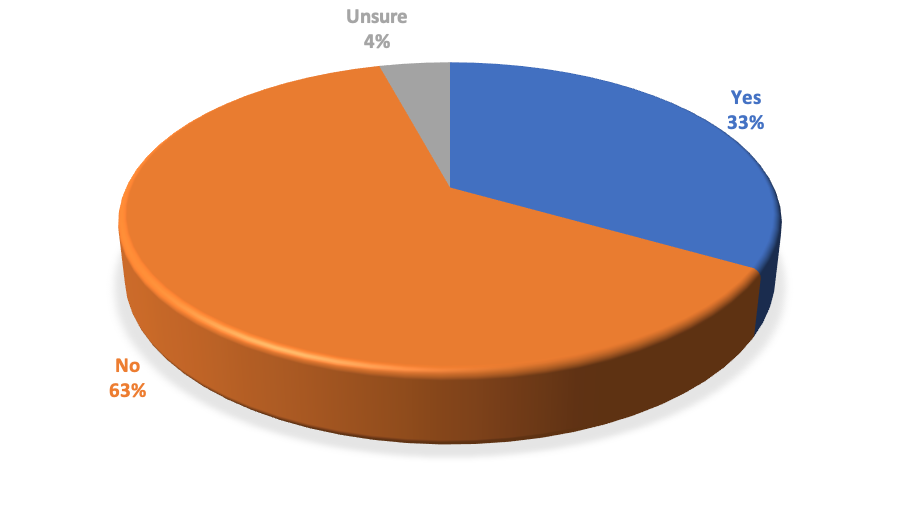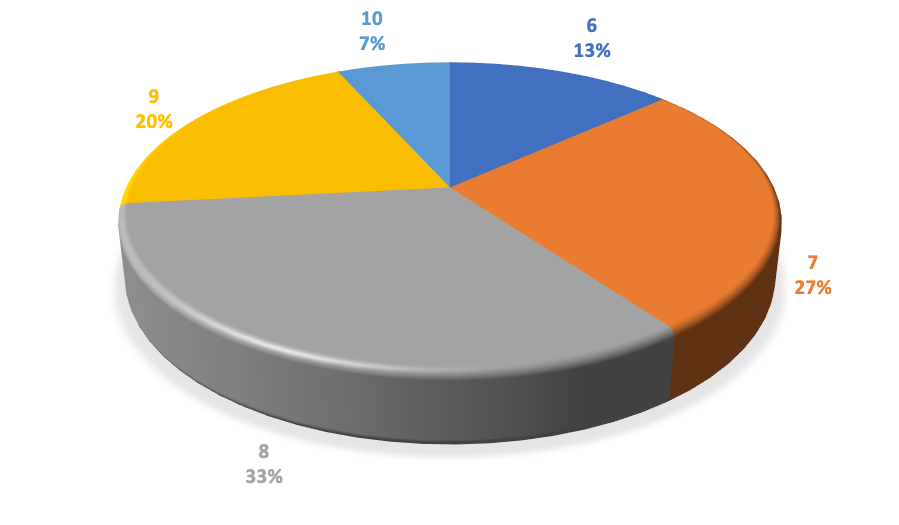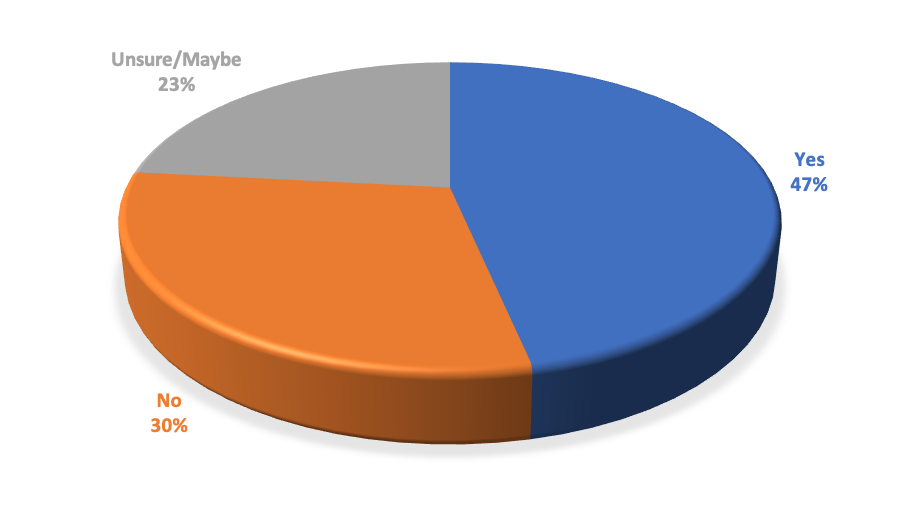We asked 48 businesses if they were currently using artificial intelligence or machine learning in their daily work. If so, how? If not, why?
Our goal was to understand more about which industries are using AI today (and use cases) and, for those that weren’t yet embracing AI, what it would take to get them there. The results were a bit all over the place and implied a lack of education and understanding about what AI and ML can do and how they can benefit their business and processes.
The results weren’t entirely surprising given the relative youth of the technology, and it speaks to the continued growth and opportunity for AI solutions. Once upon a time, electronic payments, mobile applications, cloud services, and other innovations we take for granted today were nebulous concepts that people were dubious of or completely misinformed about.
Let’s break down the survey results to uncover commonalities that may benefit solutions providers selling AI-based tech today and those considering diving in soon.
The Methodology
We made 3,626 calls to get our 48 responses. Most respondents were directors or senior-level employees in financial planning, data analysis, or operations for their company. The industries we spoke to were wide-ranging and included healthcare, retail, supply chain, grocery, wholesale, transportation, public safety, and more.
Respondents were offered a $15 gift card for their participation.
Our Findings
We started by asking if their company used AI or ML in their business. About one-third (16 total) said yes, two were unsure, and the remaining 30 said no.
Question 1:
Are you using Artificial intelligence in your business today?

First, we focused on those who responded that AI is being used in their business today.
What kind of work are you asking these systems to do?
For “Yes” respondents, we wanted to know how AI was used in their operations. The answers varied widely—many didn’t know or couldn’t disclose the information. Responses included:
- Reviewing clinical records
- Temperature control in trailers
- Cost-allocation optimization
- Facial recognition/loss prevention
- Prediction modeling & risk analysis
- Passenger count/estimating run times
- Bomb retrieval/disposal
- Prescriptive analytics
Not a lot of crossover there, but also in the wheelhouse of much of what we know AI & ML are capable of—improving existing processes or helping businesses make smarter predictions.
On a scale of 1-10, how effective do you find these systems to be?
Those using AI were pretty pleased with its effectiveness. No one gave it a rating less than a 6, and all but three fell between 7-9. A couple elaborated that their systems were 80-90% accurate.

What would need to change or improve about your AI/ML systems to make them even more impactful to your business?
Three prevailing themes could be found in these responses:
- More integration with current systems.
- More interactivity and standardization around inputs.
- Better/faster. Despite their effectiveness scores, several people thought the programs could learn more, respond to data faster, and do more than it does now.
What about those who said Artificial Intelligence was not used in their business today?
Do you foresee AI or machine learning becoming a part of your industry in the next five years?
We asked for a little future forecasting from those not using AI/ML. 47% (14 people) gave us a definitive “Yes.” 30% (9 responses) said “No,” and the rest were either unsure or “maybes.”

What are the barriers to AI use? What would need to change for AI or ML to become more impactful or practical for your business?
The last two questions are where we get into the heart of the challenges solution providers face in positioning AI for business needs, including perceptions (some understandable, some unfounded) keeping many from embracing the technology or seeing its potential.
Among the barriers, here are four types of responses that stood out:
- The human element. Respondents were either concerned about replacing people or the systems couldn’t do what people could.
- No “fit.” These responses told us they didn’t see where AI could fit into their operations or how it would improve their jobs or performance.
- Industry barriers. Several answers felt that AI & ML software wasn’t advanced enough to be functional or that their industry was too complex to utilize.
- Cost & implementation. The cost wasn’t a common answer, but there were multiple concerns about the personnel and time needed to implement such a system.
The question related to what would need to change had similar answers:
- Mass acceptance. This response says, “I’ll think about it when more businesses are using it.” Never the first adopter, always the skeptic. A few gave this answer more along the lines of convincing others of the benefits, though.
- “Prove it.” Having a use case for their business or industry was important for many.
- The security and privacy of sensitive information were top of mind for several respondents.
- How will an AI system fit with the platforms currently in the business?
Key Takeaways
Artificial intelligence & machine learning are still very nascent technologies to potential end-users. The responses we received, especially when we asked them to think about future uses and barriers, demonstrate that these applications simply aren’t prevalent enough for a consistent attitude about how and why they’d be used in a business or even what the technology does.
That puts VARs in a unique position to educate and present potential use cases to their customers. You could be the one driving the perception and conversation.